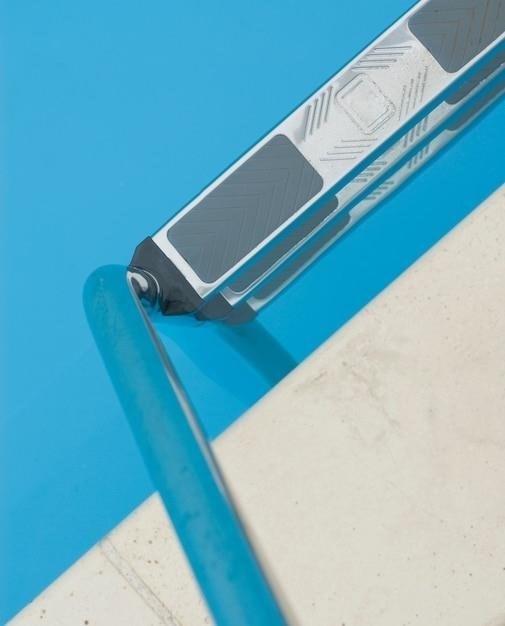Finding the perfect pair of gloves can be a challenge, especially if you’re unsure about your size. A proper fit is crucial for comfort, dexterity, and performance, whether you’re enjoying winter activities, playing sports, or working with your hands. This guide will help you determine your glove size and choose the right fit for your needs.
Introduction
Gloves are an essential part of our wardrobe, providing warmth, protection, and enhanced grip in a variety of situations. Whether you’re braving the winter chill, engaging in sports, or performing tasks that require dexterity, the right pair of gloves can make all the difference. However, choosing the perfect fit can be a bit of a puzzle, especially with the wide range of glove sizes available.
Understanding glove sizing is crucial for ensuring optimal comfort, performance, and even safety. A glove that’s too small can restrict blood circulation, impair dexterity, and lead to discomfort. Conversely, a glove that’s too large can slip off easily, compromising grip and protection. Finding the right glove size involves a simple measurement process and a bit of knowledge about sizing charts.
This comprehensive glove size guide will equip you with the information and tools you need to choose the perfect fit for your hands. We’ll explore the importance of proper glove fit, provide step-by-step instructions on how to measure your hand for gloves, and delve into various glove size charts. By the end of this guide, you’ll have the confidence to select gloves that feel great and perform as intended.
Importance of Proper Glove Fit
The importance of a proper glove fit cannot be overstated. It’s not just about comfort; it’s about functionality, performance, and even safety. When gloves fit correctly, they enhance your experience and capabilities in various ways⁚
- Enhanced Dexterity⁚ Gloves that are too tight can restrict blood flow and limit finger movement, making it difficult to perform tasks that require dexterity. Loose gloves, on the other hand, can slip and hinder your grip. A well-fitting glove allows for natural hand movement and precision.
- Optimal Warmth⁚ A snug fit prevents cold air from seeping in, keeping your hands warm and comfortable during cold weather. Loose gloves can allow cold air to circulate, reducing their effectiveness in insulating your hands.
- Improved Grip⁚ A glove that fits properly provides a secure grip, whether you’re handling tools, playing sports, or simply holding onto something. This is particularly important for activities that require a firm and controlled grip, like cycling, skiing, or working with machinery.
- Reduced Risk of Injury⁚ Properly fitted gloves can help prevent blisters, chafing, and other injuries that can occur when gloves are too loose or too tight. They can also provide additional protection for your hands during activities that involve potential hazards.
In essence, a proper glove fit allows you to maximize your potential and enjoy a more comfortable and enjoyable experience, whether you’re working, playing, or simply staying warm.
How to Measure Your Hand for Gloves
Measuring your hand for gloves is a simple process that ensures you get the perfect fit. Here’s how to do it⁚
- Gather Your Materials⁚ You’ll need a flexible measuring tape and a pen and paper to record your measurements.
- Choose Your Dominant Hand⁚ Measure your dominant hand, as it’s typically slightly larger than your non-dominant hand.
- Measure Your Hand Circumference⁚ Wrap the measuring tape around the widest part of your hand, just below your knuckles, excluding your thumb. Make sure the tape is snug but not tight. Record the measurement in inches or centimeters.
- Measure Your Hand Length⁚ Extend your middle finger and measure the length from the tip of your middle finger to the base of your palm. Record this measurement as well.
- Consider Your Glove Type⁚ Some glove types, like work gloves or sports gloves, may require additional measurements. Check the specific glove sizing guide for any additional measurements.
Once you have your hand measurements, you can use a glove size chart to determine your glove size. Remember that glove sizes can vary slightly depending on the brand and style of glove. If you are between sizes, it’s usually best to err on the side of a larger size to allow for room for your fingers and ensure a comfortable fit.
Glove Size Charts
Glove size charts are invaluable tools for finding the perfect fit. They provide a clear correlation between your hand measurements and the corresponding glove size. These charts are typically organized by hand circumference, and sometimes also by hand length, providing a comprehensive guide for different glove types and brands.
Here’s a breakdown of the types of glove size charts you might encounter⁚

- General Glove Sizing Charts⁚ These charts offer a general guideline for glove sizes, applicable to a wide range of glove types. They often display hand circumference in inches or centimeters and the corresponding glove size.
- Specific Glove Sizing Charts⁚ These charts provide more specific sizing information for particular types of gloves, such as work gloves, sports gloves, or winter gloves. They might incorporate additional measurements, such as hand length or finger length, for a more precise fit.
- Brand-Specific Glove Sizing Charts⁚ Many glove manufacturers provide their own sizing charts, tailored to their specific glove designs and materials. These charts offer the most accurate sizing information for their products.
When using a glove size chart, it’s essential to carefully follow the instructions and ensure you’re using the appropriate chart for the type of glove you’re buying. If you’re still unsure about your size, consult the manufacturer’s website or contact their customer service for assistance.
General Glove Sizing Chart
A general glove sizing chart provides a basic guide for determining glove size based on hand circumference, typically measured in inches or centimeters. It’s important to note that this chart is a general guideline, and actual sizing may vary depending on the specific glove brand and style. It’s always best to consult the manufacturer’s size chart for the most accurate information.
Here’s a sample general glove sizing chart that can give you a starting point for finding your glove size⁚
| Hand Circumference (inches) | Glove Size |
|---|---|
| 6.5-7 | Small |
| 7.5-8 | Medium |
| 8.5-9 | Large |
| 9.5-10 | Extra Large (XL) |
| 10.5-11 | XX Large (XXL) |
Remember that these are just general guidelines. Always check the specific glove size chart for the brand and style you are interested in for the most accurate fit.
Specific Glove Sizing Charts
While general glove sizing charts can provide a helpful starting point, it’s crucial to refer to specific glove sizing charts provided by the manufacturer for each brand and style of gloves. This is because glove sizing can vary significantly depending on the brand, type of glove, and intended use.
For example, a glove designed for winter sports may have a different sizing system than a glove designed for cycling or gardening. Additionally, some brands may have their own unique sizing systems, so it’s essential to consult the specific sizing chart for the gloves you are interested in purchasing.
Specific glove sizing charts can be found on the manufacturer’s website, in product descriptions, or on packaging. These charts will often include detailed instructions on how to measure your hand correctly and will provide a conversion table for different sizing systems.
By taking the time to consult specific glove sizing charts, you can ensure that you choose the right size for your needs and get a comfortable, functional, and well-fitting pair of gloves.
Tips for Choosing the Right Glove Size
Choosing the right glove size is essential for optimal comfort, dexterity, and performance. Here are some tips to help you make the right decision⁚
Consider the Activity⁚ Different activities require different glove fits. For example, gloves for winter sports should be snug to prevent heat loss, while gloves for cycling or gardening need more dexterity and flexibility.
Measure Your Dominant Hand⁚ It’s crucial to measure your dominant hand, as it’s the hand that will be used most frequently. This will ensure a comfortable fit for the glove that you will wear the most.
Pay Attention to Materials⁚ Thicker materials, like fleece or wool, can make the gloves feel tighter than thinner materials, like cotton or nylon. Keep this in mind when choosing your size.
Check Manufacturer Recommendations⁚ Always consult the manufacturer’s sizing charts and recommendations for the specific glove style you are considering. They often offer detailed instructions on measuring your hand and provide conversion tables for different sizing systems.
Consider Seasonal Variations⁚ Your hand size can change slightly depending on the season. For example, your hands might be slightly larger in the winter due to thicker clothing. Keep this in mind when choosing gloves for different seasons.
Finding the right glove size is a crucial step in ensuring comfort, dexterity, and performance, regardless of your activity. By following the tips outlined in this guide, you can confidently determine your glove size and choose a pair that fits perfectly. Remember to consider the specific activity you’ll be using the gloves for, measure your dominant hand accurately, and consult the manufacturer’s sizing charts for the most accurate fit.
With a bit of attention to detail, you can find gloves that provide the perfect balance of warmth, protection, and dexterity, allowing you to enjoy your favorite activities without worrying about uncomfortable or ill-fitting gloves.
Whether you’re braving the cold, playing sports, or working with your hands, the right pair of gloves can make a world of difference. Invest in a proper fit, and you’ll be rewarded with comfort, functionality, and a more enjoyable experience.
FAQs
Here are some frequently asked questions about glove sizing to help you find the perfect fit⁚
What size are 7.0 gloves?
A 7.0 glove size typically corresponds to a hand circumference of 7 inches or 17.8 cm. This size is generally considered a small size for men and a medium size for women.
How big is a 9.5 glove?
A 9.5 glove size typically corresponds to a hand circumference of 9.5 inches or 24.1 cm. This size is generally considered a large size for men and an extra-large size for women.
What glove size is L?
A glove size labeled “L” usually corresponds to a large size. The exact hand circumference for a large size can vary depending on the manufacturer and the type of glove. It’s always best to consult the specific sizing chart for the brand you’re interested in.
If you’re still unsure about your glove size, it’s always recommended to consult a sizing chart or reach out to the manufacturer for assistance. They can provide you with the most accurate information for their specific products.
What size are 7.0 gloves?
A 7.0 glove size typically corresponds to a hand circumference of 7 inches or 17.8 cm. This size is generally considered a small size for men and a medium size for women. It’s important to note that glove sizing can vary slightly between brands, so it’s always recommended to check the specific sizing chart provided by the manufacturer.
When determining your glove size, it’s crucial to measure your dominant hand, as it tends to be slightly larger than your non-dominant hand. Wrap a measuring tape around the widest part of your hand, just below the knuckles, excluding your thumb. Ensure the tape measure is snug but not too tight.
If you find that your hand measurement falls between two sizes, it’s generally recommended to choose the larger size for a more comfortable fit. Remember, gloves that are too tight can restrict blood circulation and dexterity, while gloves that are too loose can be uncomfortable and may slip off easily.
By using this information and consulting specific sizing charts, you can confidently determine your glove size and find the perfect fit for your needs.

How big is a 9.5 glove?
A 9.5 glove size generally indicates a hand circumference of 9.5 inches or 24.1 cm. This size is typically considered a large size for men and an extra-large size for women. However, it’s essential to remember that glove sizing can vary between manufacturers and specific glove types. Therefore, consulting the sizing chart provided by the brand is always recommended.
When determining your glove size, it’s important to measure your dominant hand, as it tends to be slightly larger than your non-dominant hand. Wrap a measuring tape around the widest part of your hand, just below the knuckles, excluding your thumb. Ensure the tape measure is snug but not too tight.
If you find that your hand measurement falls between two sizes, it’s generally recommended to choose the larger size for a more comfortable fit. Remember, gloves that are too tight can restrict blood circulation and dexterity, while gloves that are too loose can be uncomfortable and may slip off easily.
By using this information and consulting specific sizing charts, you can confidently determine your glove size and find the perfect fit for your needs. Remember, proper glove fit is crucial for comfort, dexterity, and performance.
What glove size is L?
A glove size “L” typically corresponds to a large size, but the specific hand circumference it represents can vary depending on the brand and type of glove. For example, a large size in work gloves might be different from a large size in a pair of ski gloves. Therefore, it’s crucial to consult the sizing chart provided by the manufacturer for the specific gloves you’re interested in.
Generally, a “L” size for gloves is suitable for individuals with a hand circumference between 8.5 inches and 9.5 inches (21.6 cm ⎯ 24.1 cm), but this can vary. To determine your correct size, it’s essential to measure your dominant hand. Wrap a measuring tape around the widest part of your hand, just below the knuckles, excluding your thumb. Ensure the tape measure is snug but not too tight.
If your measurement falls between two sizes, it’s usually recommended to choose the larger size for a more comfortable fit. Remember, gloves that are too tight can restrict blood circulation and dexterity, while gloves that are too loose can be uncomfortable and may slip off easily. Always refer to the specific sizing chart provided by the manufacturer for the most accurate fit.















